Dance in Israel
Dance - one of peoples’ favourite pastimes…an activity, hobby or passion that individuals the world over take pleasure in. And in Israel that’s no exception - people have been dancing in Israel before it was created! There are mentions of dance in the Jewish sacred texts (today, Jews dance and rejoice with Torah scrolls at the festival of Simchat Torah) and this kind of expression has always been an important part of communal life, particularly weddings!.
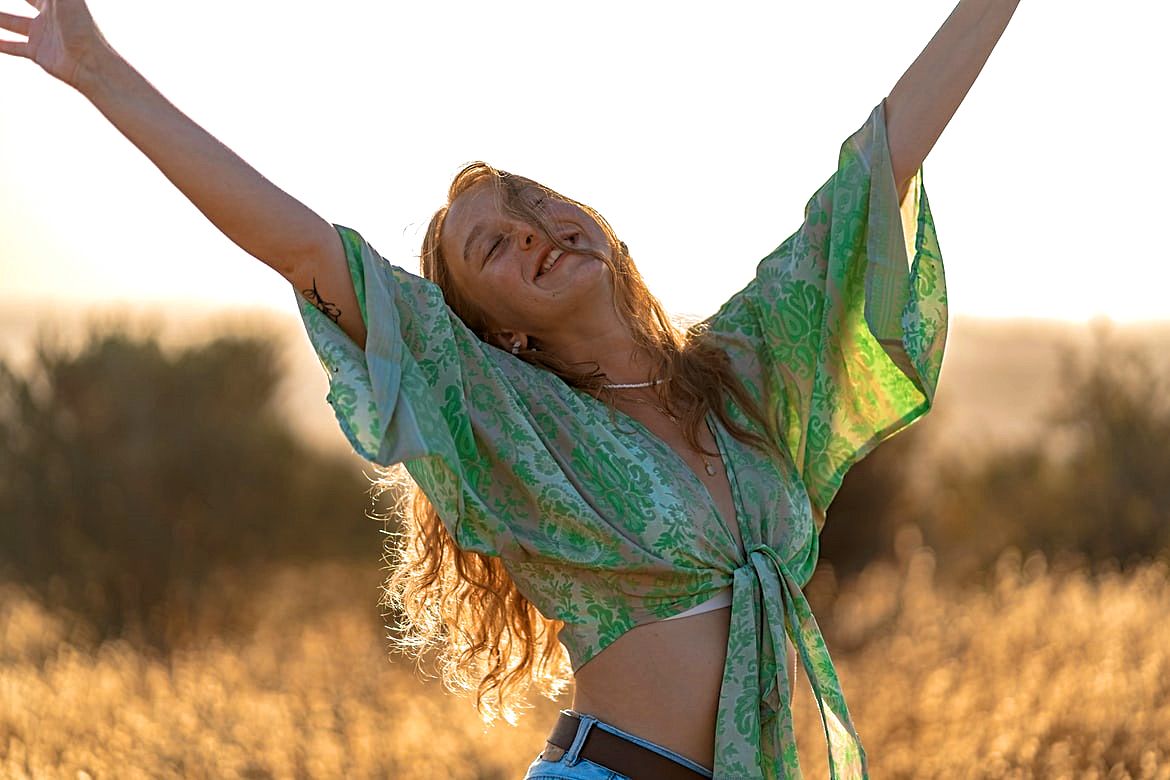
Dancing girl, Tel Aviv, Israel. Photo by Or Hakim on Unsplash
The modern origins of dance in Israel can be traced back to the waves of immigration that began just the beginning of the 20th century. Jews from all over Russia and Eastern Europe who had Zionist sympathies brought with them the dances of their mother nations. This really led to the movement of ‘folk dancing’ - a way for individuals to express the culture they had learned as children.
Today, dance in Israel incorporates all kinds of styles and techniques from traditional to contemporary. Dancing to music sung in Hebrew, Yiddish, and Ladino, dance has taken on two major forms - traditional folk dancing and dance as an art form (using professional choreographers, stage productions, and trained artists). One thing we do know, however, is that whether you want to dance or watch a dance performance, you’ll be able to do so almost anywhere in Israel. Let’s have a closer look at all things to do with this wonderful activity…

Market Dance, a ballerina in the Carmel Market. Photo by Liel Anapolsky on Unsplash
Folk Dancing in Israel (Rikudei Am)
Folk dancing has a long and colorful history in Israel - as a form of dance, performed to songs in Hebrew, it has been around for over 100 years. The beginnings of it can be traced back to pioneering Jews who arrived in the country in the 1880s, then the turn of the century, and later in the 1930s. In the ‘Aliyahs’ (periods when many Jews arrived in what was then called Palestine ) by these diaspora Jews, the desire for communal dancing increased, very much in line with the desire for the creation of a Jewish state.
Dances brought to the Promised Land by these European Jews included the polka, rondo, and hora and it was the third of these that eventually became Israel’s ‘national dance’. The hora itself (a circle dance) was and still is, today, an iconic dance in Israeli folk dancing culture. Performed at festivals and celebrations, and set to Israeli music - folk, klezmer, or (most popularly) the tune of ‘Hava Nagila’ - it is danced at practically every wedding or bar mitzvah celebration both in Israel and in Jewish communities around the world.
The hora was also made incredibly famous after the State of Israel was created, when Jews in Tel Aviv and across the land broke into spontaneous hora dancing, to mark their joy at Ben Gurion’s Declaration of Independence. Today, Israeli folk dancing is still very popular, with groups all over the country dedicated to its preservation. It’s also wonderful for tourists to watch in places like the Tel Aviv Beach Promenade, on Saturday morning, when locals gather by the Gordon Beach and perform folk dances for two or three hours, to the delight of passersby!
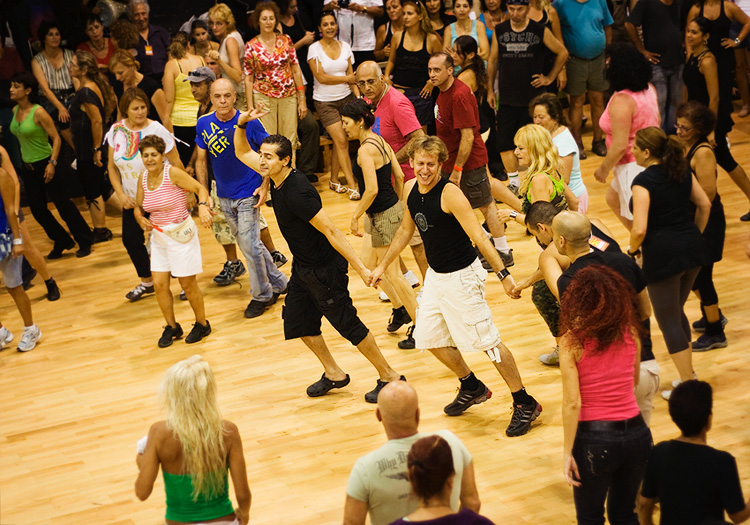
Israeli folk dance (rikudei am), Karmiel, Israel. Photo credit: © Dana Lifanova
Ballroom dancing in Israel
In recent years, ballroom dancing has become very popular in Israel, in part because of an interest in an ‘old’ hobby and in part because of shows such as ‘Dancing with the Stars.’ The studio in Ramat HaSharon (close to Tel Aviv) named ’Arthur Murray’ has made a name for itself teaching enthusiasts ballroom and Latin dancing.
There is also a ballroom dancing academy open in Ashdod, a city home to many Russian immigrants who loved the pastime, back in the country of their birth, and took it up with gusto here. In recent years, Israel has even competed in ballroom dancing world championships! With more and more classes on offer throughout the country, it seems like the stereotype of ballroom dancing being an aristocratic, older person’s hobby - is finally being laid to rest.
Ballroom dancing. Photo by Preillumination SeTh on Unsplash
Contemporary dance in Israel
Gaga - the most famous kind of contemporary dancing in Israel today has got to be ‘Gaga’. No, that doesn’t refer to anyone gone mad; rather it’s an innovative modern dance movement developed by the Batsheva Dance Company (see below, in ‘Dance Companies’) under the directorship of Ohad Naharin.
Gaga is hard to define but essentially it’s a dance technique that focuses on physical bodily sensations, communication, and creativity. The Gaga method offers dancers the opportunity to develop stamina along with coordination, by exploring speed and form. Gaga, says Naharin, is both playful and powerful and, every year, dancers from around the world arrive in Tel Aviv, to learn more about it. Gaga performances are often given at the Suzanne Dellal Centre in the Neve Tzedek neighborhood and, in these trying Corona times, they also offer classes online.
Earth Dance - Earth Dance in Israel is held each year (on the same day as similar Earth Dance events across the globe) in the tranquil Galilee region. This social, musical, and family-friendly event offers numerous activities, including dance performances from all kinds of traditions (think African, Indian, South American, and Asian…)
Flash Mob Dance - the flash mob dance craze has reached many parts of the world, and Israel is one of them. For anyone who doesn’t know, this is when a group of people all gather together in a public space and then break into amazing dance routines in front of an unsuspecting public. Flash mobs have become increasingly popular in Israel in the last ten years and are often very well organized and a delight to watch. Here’s a flashmob dance event in Jerusalem that took place close to the Jaffa Gate and the Mamilla rooftop restaurant.
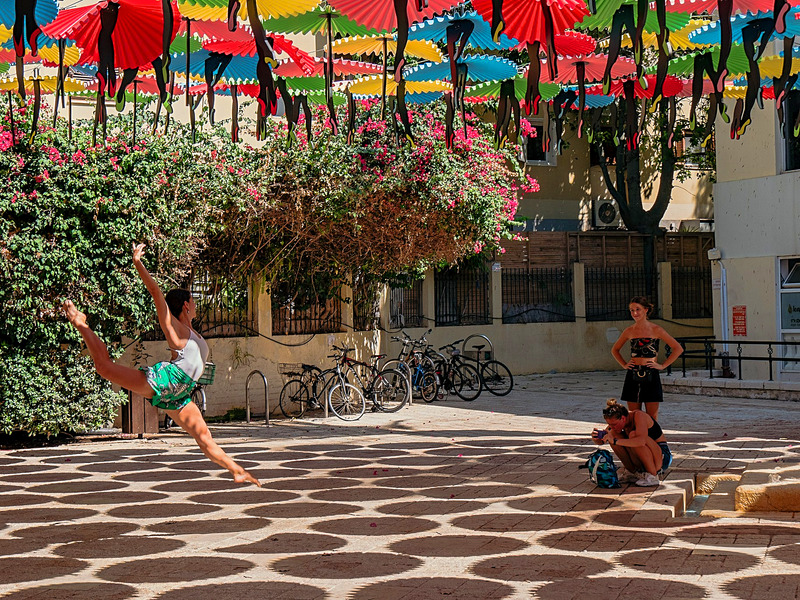
Dancing students at the entrance of Suzanne Dellal Center. Photo credit: © Dmitry Mishin
Dance festivals in Israel
Karmiel Dance Festival - this world-famous dance festival first took place in 1987 and, since then, has been held annually, each July, in the charming town of Karmiel in northern Israel. Originally established as a festival for Israeli folk dance, their offerings have expanded widely over the years and now include performances from troupes across the world.
Showcasing Israeli music and dance (think ballet, modern, hip-hop, folk to say the least) it brings dancers together from across the world, with no regard for age, skillset, faith or creed. Two major competitions take place within the festival - one involving folk dancing and the other choreography. Corona permitting (!) the festival will take place sometime this summer, on 5-7 July 2022.
Activities will take place at venues across Karmiel, and will certainly include extended dance sessions, original productions, and new artistic creations, including a production that is put on on the last night, featuring hundreds of performers. You don’t have to dance either - you can go and watch, and enjoy some street food and live music while you’re at it! Our tip: don’t miss the opening act - a pageant in which thousands participate, accompanied by all kinds of musicians and orchestras.
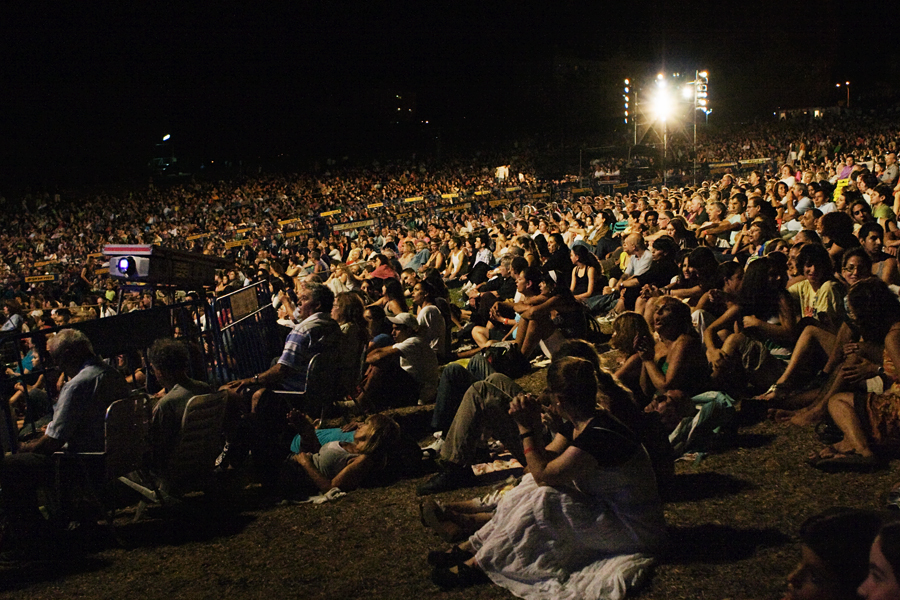
Karmiel Dance Festival at night, Israel. Photo credit: © Dana Lifanova
Tel Aviv International Dance - this annual festival has been taking place since 1999 each summer and runs for at least a week. It is held at the state-of-the-art Suzanne Dellal Centre, in Neve Tzedek, one of the city’s most beautiful and charming neighborhoods.This Tel Aviv festival showcases both Israeli and international dance companies and choreographers, and hosts between 2,000 and 10,000 attendees per day. Last year, there were 25 performances, 8 premieres and 13 new productions by Israeli artists, as well as 3 performances for young children and their parents.
Jerusalem International Dance Week - this festival aims to promote Jerusalem as an international dance space and to make visible high-quality, contemporary Israeli dance to the top international festivals worldwide. The showcase events and the international choreography competition were founded in collaboration with the Ministry of Foreign Affairs in 2011. Events are held at the Machol Shalem Dance House, and include original works of contemporary dance which, year after year, excite audiences from across the spectrum.
Room Dances Festival, Israel - held both in Jerusalem and Tel Aviv, this festival was established by Amos Hetz, 32 years ago. A performer and choreographer himself, he wanted to offer a platform for artists who wanted to create an intimate space between them and their audiences. The festival is usually held in November and runs for 3 nights, and this year’s event aims to focus on solo dancers/small ensembles who will perform in venues without a partition between stage and audience.

Ballerina on the stairs in Tel Aviv. Photo by Liel Anapolsky on Unsplash
Dance Companies and Teachers in Israel
The Kibbutz Contemporary Dance Company (KCDC) - directed by Rami Be’er, who is well-known in the dance world for his unique choreographic skills, this world-famous dance company performs across the globe. Based in the beautiful location of Western Galilee, they also offer intensive summer dance programs (two, four, and six weeks) for both high school and university students.
KCDC was founded by the late Yehudit Arnon, in 1973, who - back then - had no idea how famous it would become. Today, in the ‘Dance Village’ there, the emphasis is on fostering excellence and creating a space for international dancers. They also offer special projects and guided tours.
Vertigo - this modern dance company, based in Jerusalem, was established in 1992, by Noa Wertheim and Adi Sha’al. They perform works both by Wertheim and independent choreographers from Israel and around the world. Located on Bezalel Street, in the downtown part of the city, they also offer workshops, training, and classes.
Dance neon sign. Photo by Georgia de Lotz on Unsplash
Batsheva - this world-famous company, situated in Tel Aviv, was founded by the legendary Martha Graham and Baroness Batsheva de Rothschild, in 1964 and really was a consequence of the growing interest in modern dance in the USA at that time. Dancers were trained in the Graham technique, although their performances often ended up being most unlike their American counterparts.In 1990, Ohad Naharin was appointed as Artistic Director and is probably best known for his introduction of the “Gaga’ method (see the section above, in ‘Contemporary Dance.’) Batsheva’s Tel Aviv home is at the Suzanne Dellal Centre in Neve Tzedek and today is at the forefront of modern international dance.
Inbal Pinto and Avshalom Pollock Dance Company - this eponymous dance company was established in 1992 and is also based in Tel Aviv, performing at Suzanne Dallal. They have 12 regular dancers and are known for their unique performances, particularly when it comes to choreographers.
Yasmeen Godder Dance Company - Yasmeen was born in Jerusalem but moved to New York City at 11, and graduated from the High School of the Performing Arts, then moving on to study with Martha Graham. After returning to Israel, she settled in Tel Aviv where she now teaches concert dance. Her works have been performed in France, Germany, and the USA, and in 2007, she established the Yasmeen Godder Studio in Jaffa.
Ballerina in Tel Aviv. Photo by Liel Anapolsky on Unsplash
Dance Schools in Israel
The Jerusalem Academy of Music and Dance - as well as its extensive music programs, Academy has a dedicated dance department, focused on producing dancers, teachers, and choreographers who have a broad background in performance, instruction, and creative activity. They offer both theoretical and practical training and a state-of-the-art building in which to learn both dance and movement techniques.
Mehola - this dance school has five branches across Israel and offers unusual and modern repertories for children to learn. These include folklore, jazz, hip hop, musical, and even ‘Zionist’ themes. There are also classes in fields such as character dancing, technical polishing, and character development.
International Ballet School, Tel Aviv - with both children and adults divisions, this ballet school’s philosophy is that the dance should be able to express their individuality. Set up in 2017 by Nicholas Barez, it offers local and international families alike a unique opportunity - to learn the French classical ballet technique in a very multicultural environment.
Ballerina at the Tel Aviv Museum of Art. Photo by Liel Anapolsky on Unsplash
The school runs two language sections - one in Hebrew, the other in English/French. These two then merge into a single English-speaking program for those aged 12 and above. They also offer intensive courses at Hanukkah, Passover, and in the summer.Fresco Dance - Established in 2002 by Yoram Karmi, this Tel Aviv-based company performs regularly throughout the year in Israel and also abroad. They have produced dance pieces that premiered in the Israel Festival in 2007/2010 and in festivals around the world. Placing their emphasis on technique, as well as individual style and character, they give performances both for adults and children.
Bikurey Ha’Itim Dance - both a dance school and university, this Tel Aviv center offers part-time and full-time courses for students aged 18-22. Their evening classes are open to the entire public, giving you a chance to practice your Brazilian moves, the Lindy swing, Argentinian tango, Cuban salsa, and even a little ballroom!
If you are interested in Israeli culture, feel free to read more articles devoted to theatre in Israel, music of Israel, and sculpture in Israel.
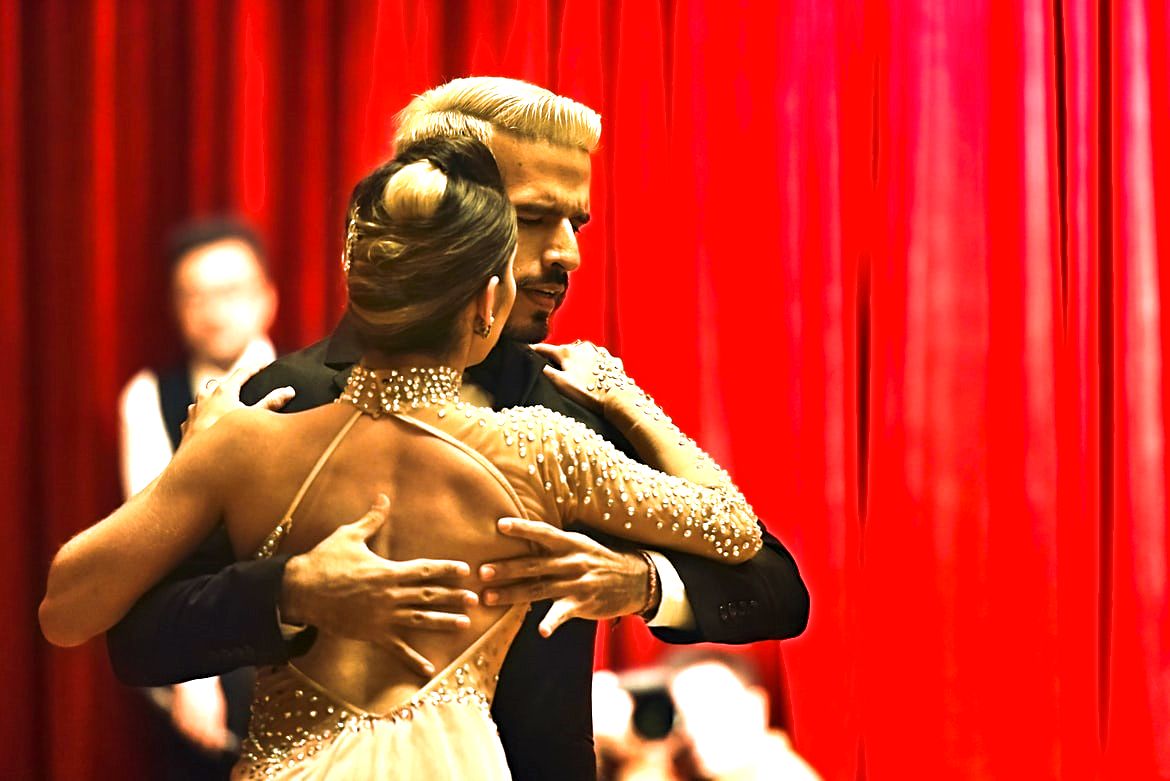
Tango dancers. Photo by Preillumination SeTh on Unsplash
 Login / Register
Login / Register
 Contact Us
Contact Us
 Certificate of Excellence
Certificate of Excellence Guaranteed Departure
Guaranteed Departure Low Prices Guaranteed
Low Prices Guaranteed 24/7 Support
24/7 Support




